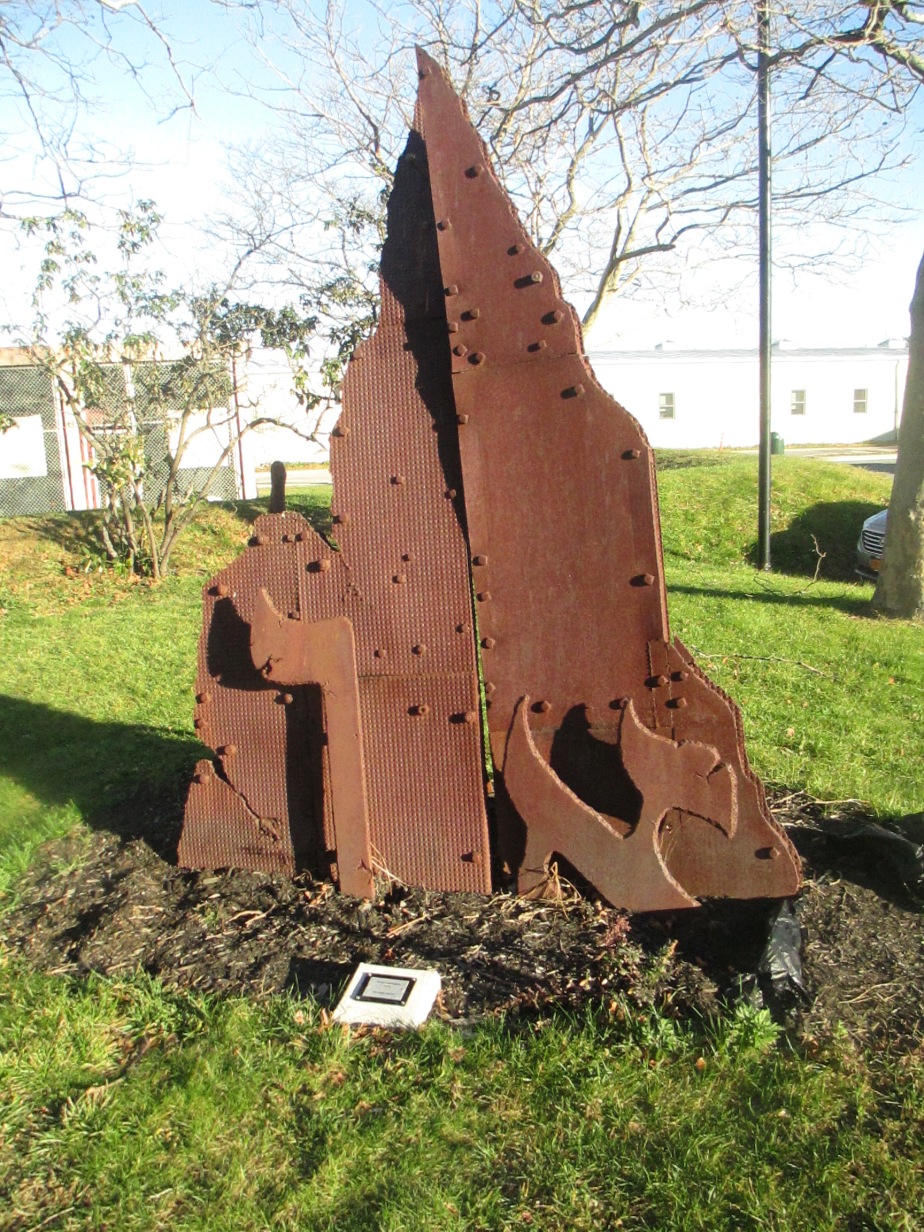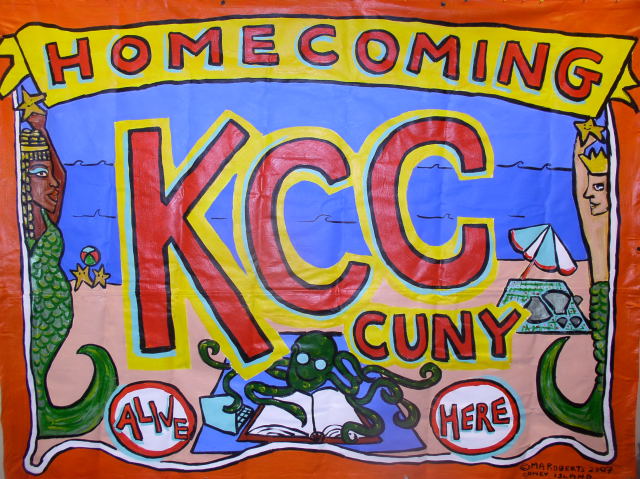
Four decades after its creation and placement on KCC’s campus, the mystery of a perplexing sculpture has been solved. With the help of the alumnus artist’s friends, its maker was finally revealed. “The Ten Commandments,” sculpted by Marty Resnick, ’72, received recognition on October 30, 2014, with the installment of a commemorative plaque.
The corroding sculpture, made of scrap metal, stands about eight feet tall and is anchored into the ground near the T1 building. It has survived both the widespread construction of the college around it and Hurricane Sandy. Yet, until recently, no one at the college knew, or remembered, its origin.
“When Marty planted that in 1973, he wanted to show only two of the Ten Commandments above ground. He wanted the illusion of this thing sinking into the ground,” said Howard Fields, one of Resnick’s friends since high school.
Resnick attended KCC in the late 1960’s and early 70’s. He met Ken Gordon, ’71, there, who along with Fields was a driving force behind this memorial. The three became very close during that time and would remain lifelong friends. According to Gordon, Resnick’s sculpture was influenced, in part, by the final image of the original 1968 movie “Planet of the Apes,” which showed the Statue of Liberty buried up to its waist on a beach. The playfulness in its construction reflected Resnick’s humor and personality.
When Resnick passed away in August of 2013, Gordon and Fields assiduously worked to honor Resnick’s memory. They reached out to the college, and discovered that KCC knew little about the sculpture and Marty’s connection to it. After months of collaboration with KCC administrators, a plaque was installed. Afterwards, Gordon and Fields held a memorial with a group of Resnick’s old friends by the sculpture, near which they had once hung out and played music together.
Gordon and Fields played the hobosong “Big Rock Candy Mountain” on their guitars, which was one of Resnick’s favorites. According to Gordon, Resnick knowing that the sculpture’s original inscription and message on the back had practically worn away — he wondered if its continued existence might be compromised if it was misconstrued and seen solely as a religious artifact, and not as the more secular think-piece that it was.
The ecologically conscious piece, constructed from materials found on the campus’ former Maritime Training Station, makes this sculpture, literally, made of KCC itself. Today the sculpture has sunk over a foot deeper into the ground, becoming more and more like Resnick’s “Planet of the Apes” vision. “Marty used art to be thought-provoking and, like him, this sculpture is part-enigma, part-puzzle, and pure Marty,” Gordon fondly added.

